The following content may contain affiliate links. When you click and shop the links, we receive a commission.
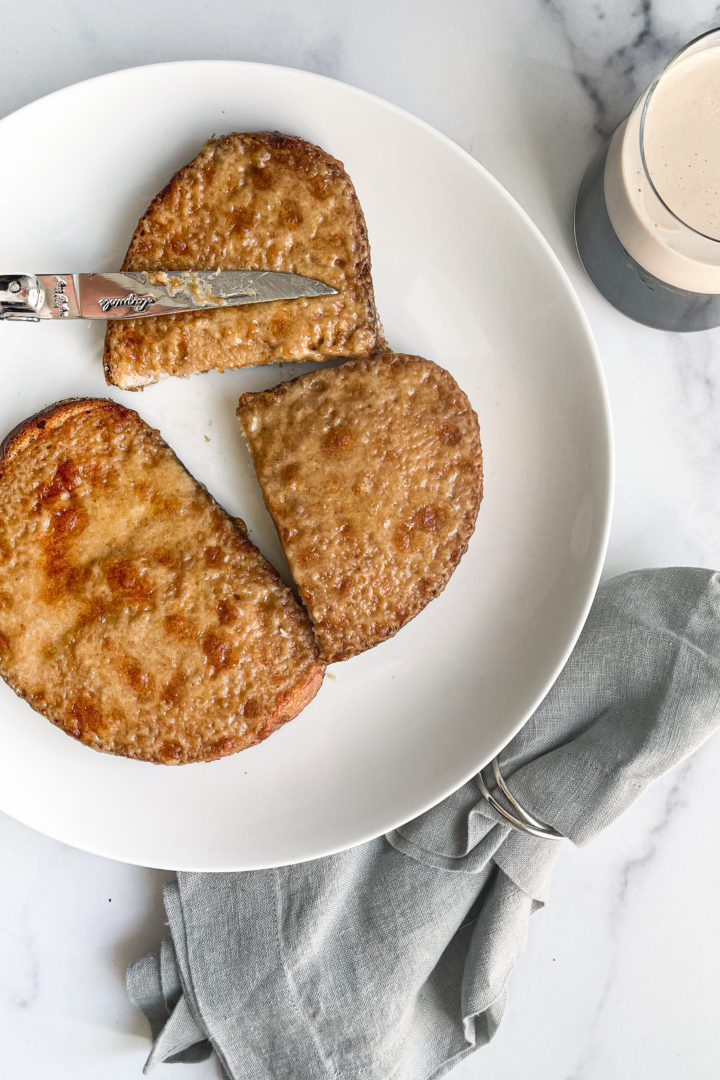
By Eden Cale
It me again! Your resident Welsh!
Earlier this year, I shared a Welsh Cakes recipe in honor of St. David’s Day, and I mentioned that my favorite traditional Welsh dish was a delicious mustardy, beer-braised cheese poured over a slice of crunchy, thick toast called Welsh Rarebit. So, in honor of Welsh Rarebit Day, I decided to share my family’s Welsh Rarebit recipe!
Clearly, my family’s Welsh pride runs deep. My dad represented Wales at the Venice Biennale in 2009, while my cousin Richard has been hard at work writing Brittle with Relics: A History of Wales, 1962-1997, which examines the Welsh struggle to maintain its language and cultural identity set against the backdrop of deindustrialization. (Faber & Faber will publish it in Spring 2022. Woot woot!) Also, diolch yn fawr to Richard for helping me track this recipe down from the coffers of his attic while he’s elbow deep in copy edits. You’re the best! Caru ti!
You’re probably thinking: ‘Welsh Rare-What?’ I know. The origin of the name is a bit convoluted.
It was originally known as ‘caws pobi’ (which literally translates to “baking cheese”) until the early 1700’s when the term ‘Welsh Rabbit’ was coined. Sadly, as with many things of Welsh origin (or Irish or Scottish, for that matter), the term ‘Welsh Rabbit’ was likely used as pejorative, due to English antipathy towards Celtic and Gaelic languages and customs.
Professor Laurence R. Horn of Yale wrote that “this is actually a relatively frequent process, particularly when the ethnic slurs reflect a systematic national chauvinism, such as the earlier English antipathies toward the Irish.” So the term ‘Welsh Rabbit’ was probably “country humor” that “convey[ed] the idea that only people as poor and stupid as the Welsh would eat cheese and call it rabbit.”¹
Because of the condescending nature of the roots of the term ‘Welsh Rabbit’, the name shifted in the 1800’s to the etymologizing alteration ’Welsh Rarebit’ that we still use today. But make no mistake, the Welsh eventually embraced the term and made it their own by the beginning of the 20th century, as we have done with pretty much every example of English ethnocentrism since the last real Prince of Wales, Llywelyn ap Gruffudd, fell to Edward I in 1283.
The moral of the story? Call this yummy, gooey, crunchy, toasted cheesy bread whatever you want to, because the Welsh will find a way to weave whatever you call it into our cultural patchwork, reimagining it into something even better than what it started out as.
Pair your Welsh Rarebit with a side salad and snarky attitude. Or enjoy it on its own as a snack while you rant about Welsh Independence. Got it? Good.
Let us know how you like it in the comments below! Cymru Am Byth!
Ingredients…
(Serves 4)
- 1 pat Unsalted Butter
- 1 tbsp All-Purpose Flour
- 1 tsp Powdered Mustard (I always use Coleman’s, and yes, I know it’s English so don’t @ me!)
- ½ cup Guinness
- A splash of Worcestershire Sauce
- 16 oz. Mature Cheddar, shredded (I always use Snowdonia Cheese Company’s Black Bomber Extra Mature Cheddar, but fair warning: it gives everyone very weird dreams after you eat it!)
- ½ tsp Cayenne Pepper (optional)
- Hearty Country-Style Bread, sliced thick (about 1-inch)
Step 1
Melt Butter
Preheat your broiler and heat the butter in a frying pan over medium heat. Once melted, stir in the flour slowly until the mixture becomes a golden paste.
Step 2
Add Dry and Wet Ingredients
Next, add the mustard powder, the cayenne pepper, the Guinness, and the Worcestershire sauce, and stir until well combined.
Step 3
Add Cheese
Now it’s time to add the cheese. Start little by little, stirring as your go, until all of the cheese is melted and mixed with the rest of the ingredients. It will seem a little watery, but don’t worry. Remove from heat and pour the cheese mixture into a shallow bowl and let it set for a few minutes on the counter. That’s where the magic happens.
Step 4
Toast Bread
While your cheese mixture is setting, and once your broiler is fully heated, add your bread slices to the broiler and cook on one side until golden brown (depending on the type of bread you’re using, this can take anywhere from 2-8 minutes.)
Step 5
Broil
Once nicely browned, carefully remove the bread from the broiler, flip it over, and spread the cheese mixture liberally on top. Place it back in the broiler and cook until the cheese is bubbling and browned (about 10 more minutes). Enjoy!
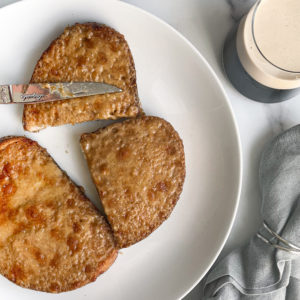
Welsh Rarebit
Ingredients
- 1 pat Unsalted Butter
- 1 tbsp All Purpose Flour
- 1 tsp Powdered Mustard
- ½ cup Guinness
- 1 splash Worcestershire Sauce
- 16 oz. Mature Cheddar
- ½ tsp Cayenne, (optional)
- Hearty Country Bread, sliced about 1-inch thick
Instructions
- Preheat your broiler and heat the butter in a frying pan over medium heat. Once melted, stir in the flour slowly until the mixture becomes a golden paste.
- Next, add the mustard powder, the cayenne pepper, the Guinness and the Worcestershire sauce, and stir until well combined.
- Now it’s time to add the cheese. Start little by little, stirring as your go, until all of the cheese is melted and mixed with the rest of the ingredients. It will seem a little watery, but don’t worry. Remove from heat and pour the cheese mixture into a shallow bowl and let it set for a few minutes on the counter. That’s where the magic happens.
- While your cheese mixture is setting, and once your broiler is fully heated, add your bread slices to the broiler and cook on one side until golden brown (depending on the type of bread you’re using, this can take anywhere from 2-8 minutes.)
- Once nicely browned, carefully remove the bread from the broiler, flip it over, and spread the cheese mixture liberally on top. Place it back in the broiler and cook until the cheese is bubbling and browned (about 10 more minutes). Enjoy!
Nutrition
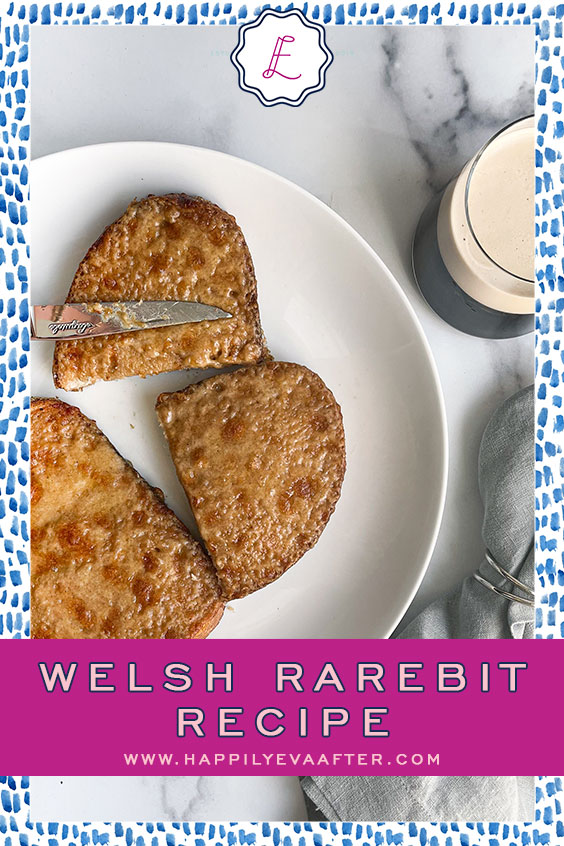
References…
- Robert Hendrickson, The Facts on File Encyclopedia of Word and Phrase Origins, 1997, as quoted in Horn, “Spitten Image“
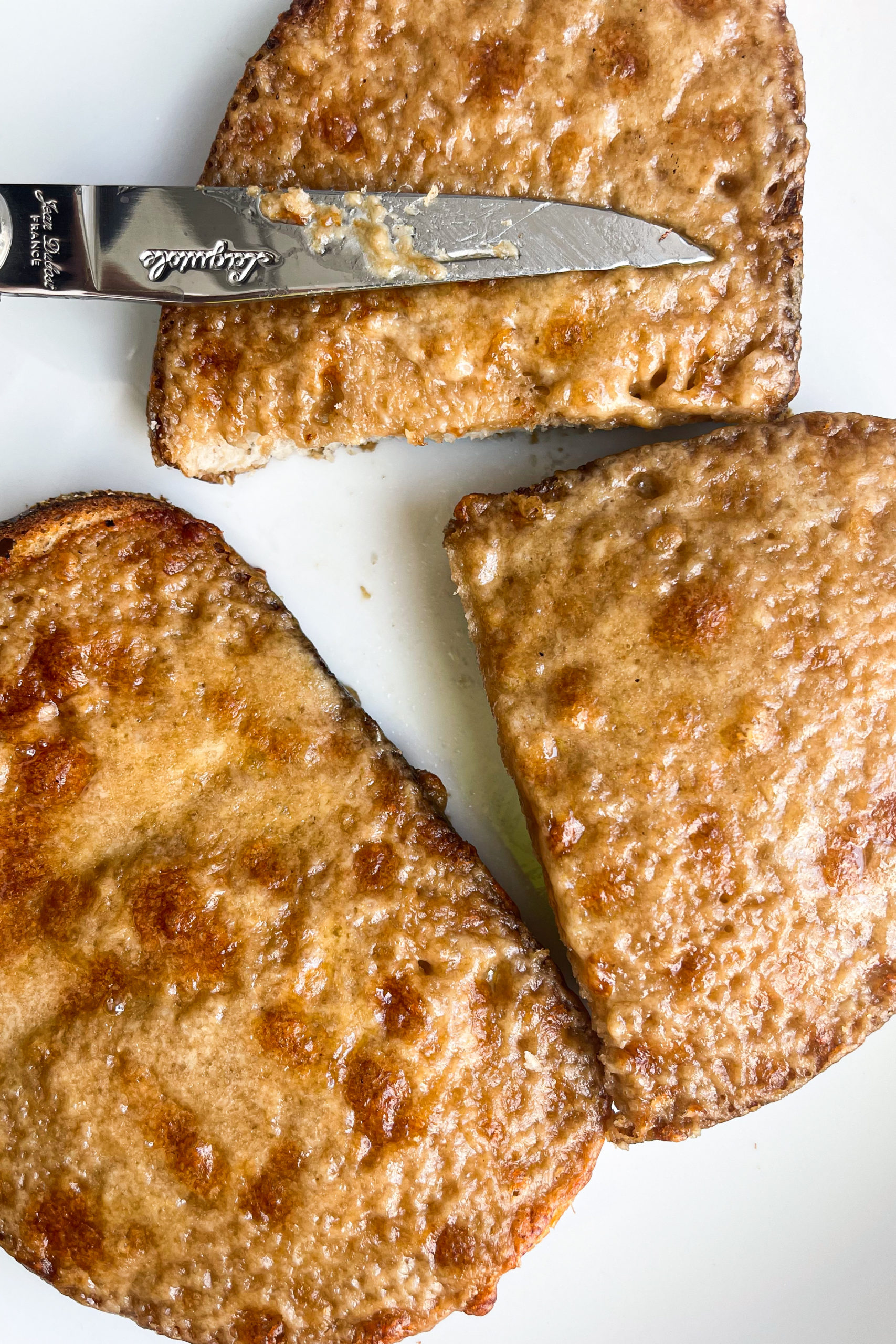
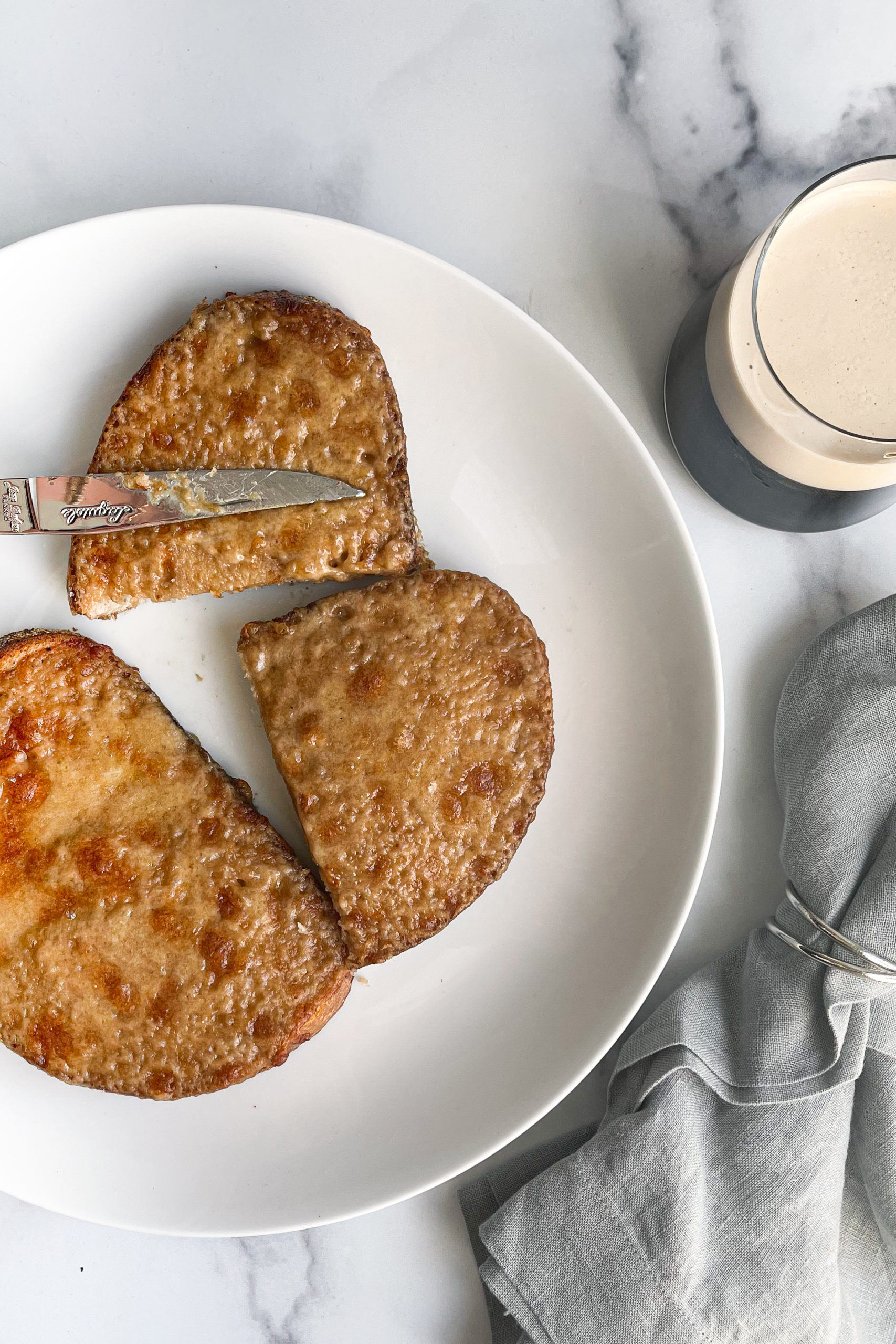
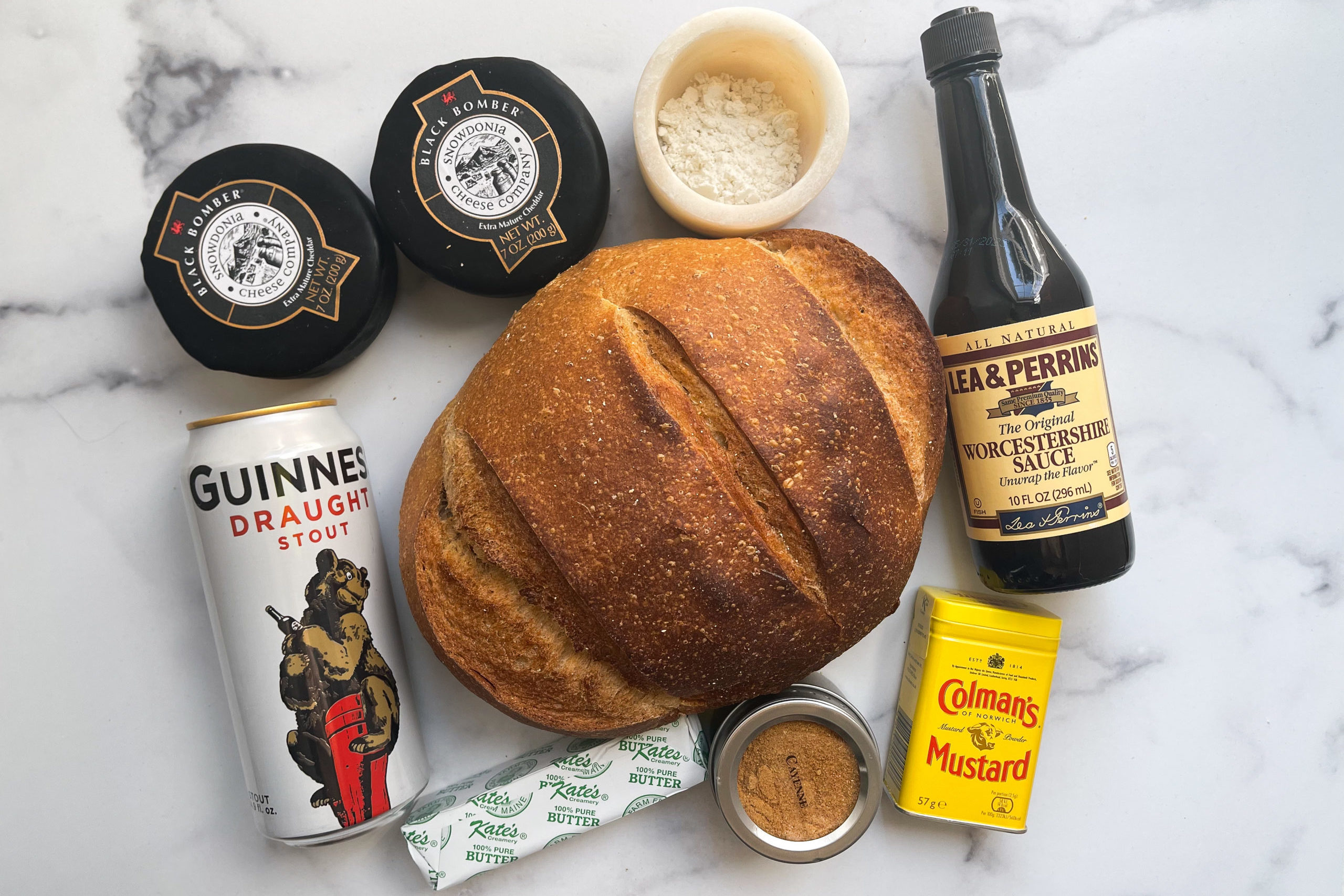

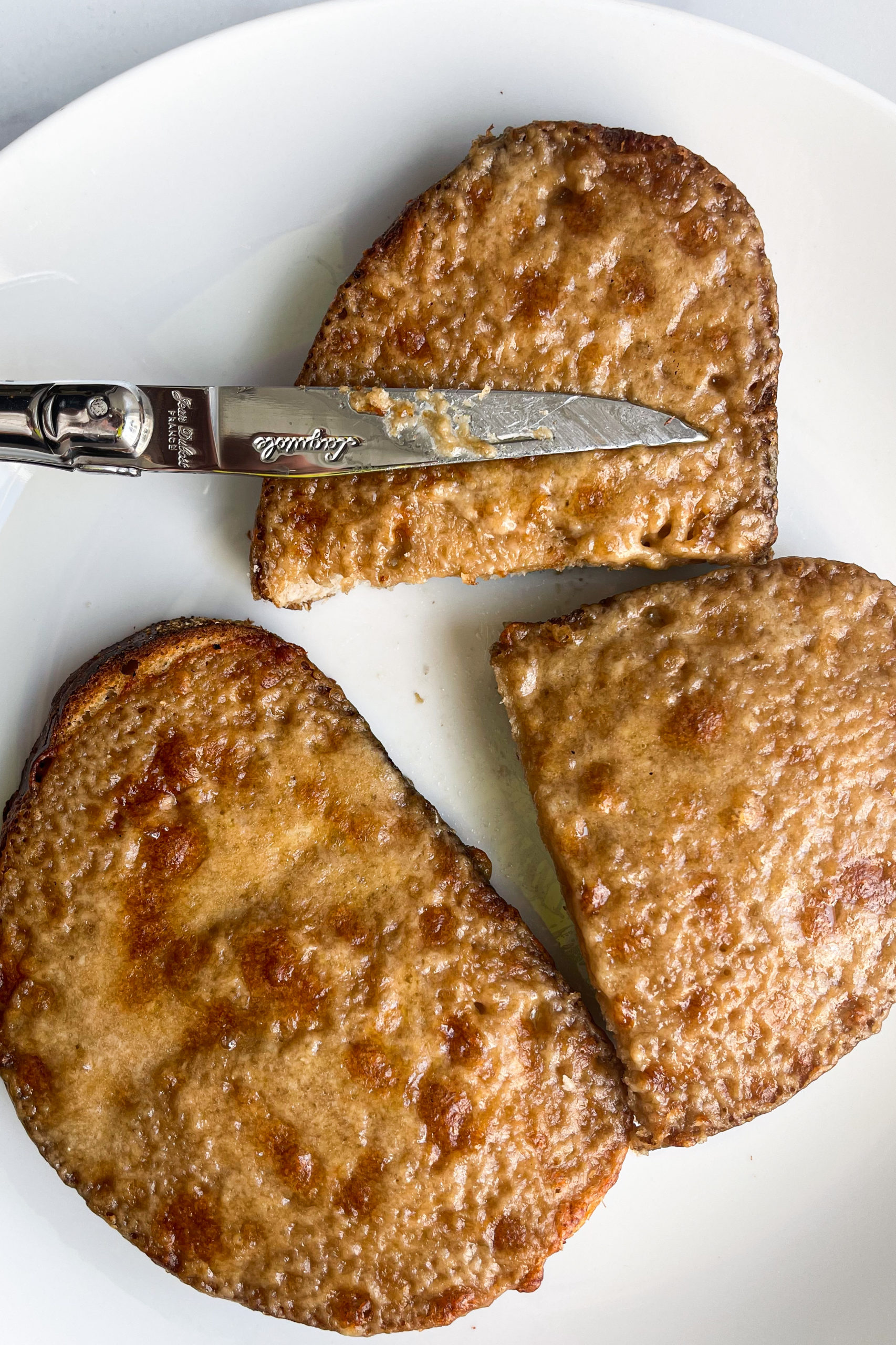

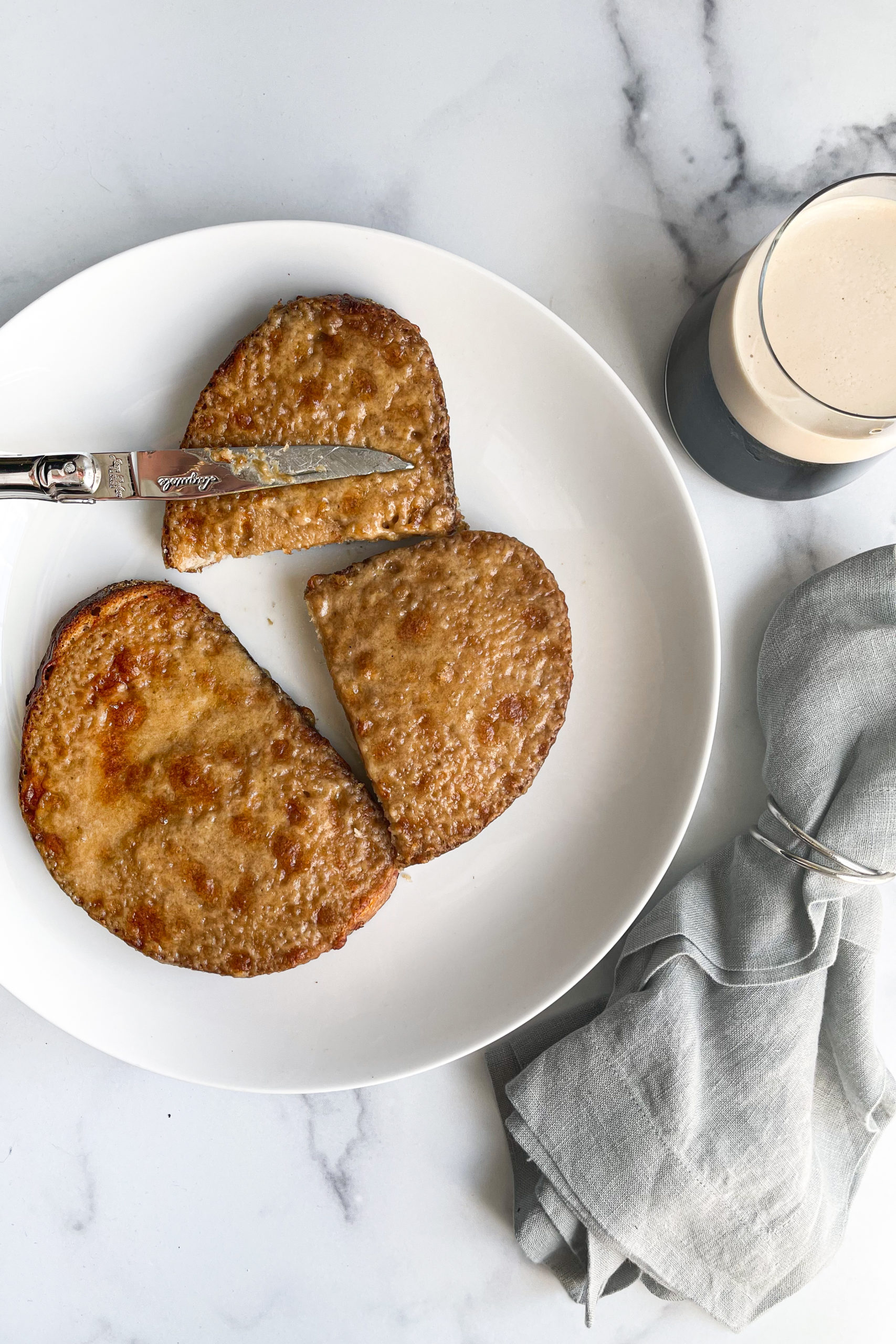


this food is very delicious thank you for making this delicious recipe